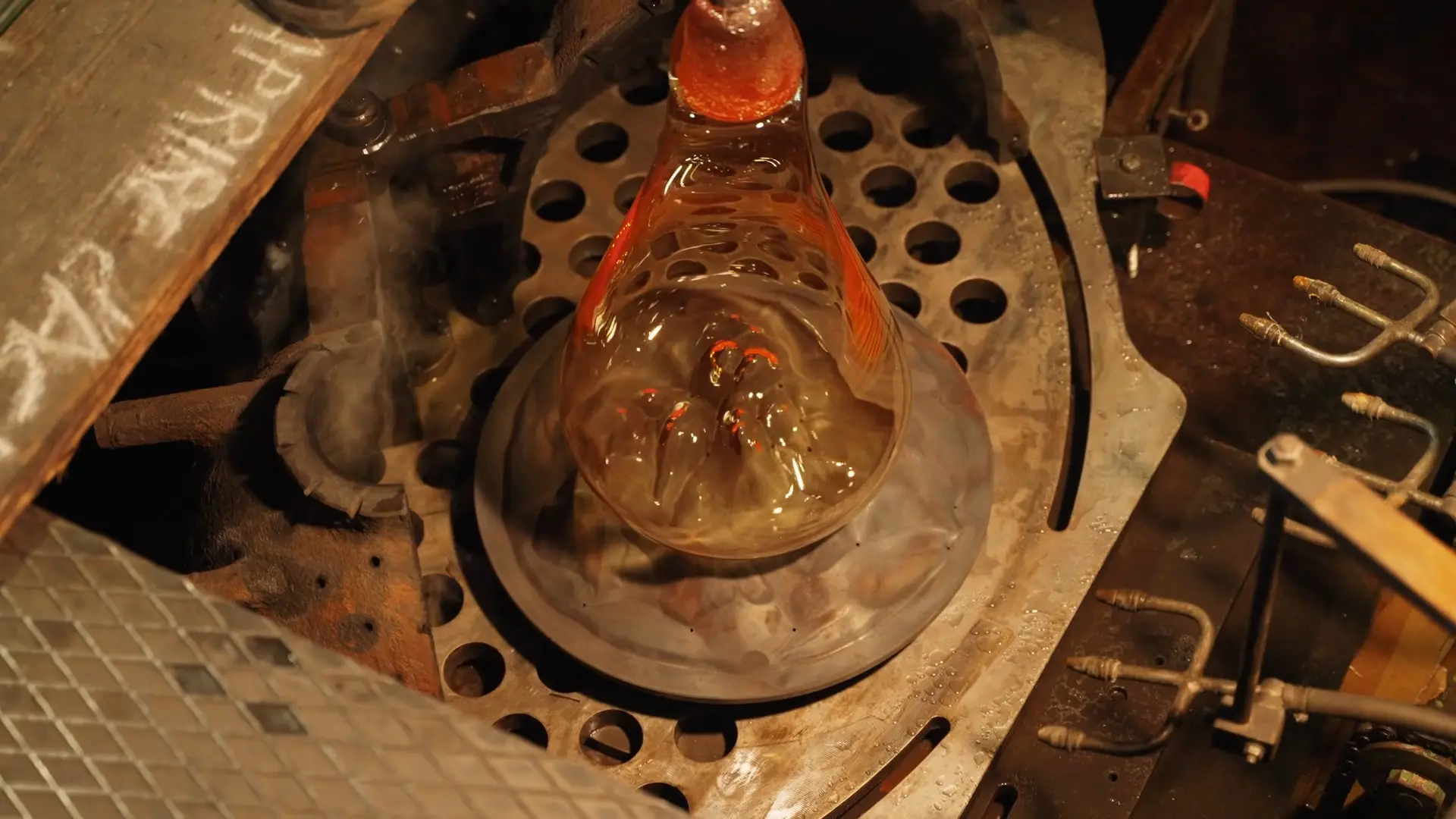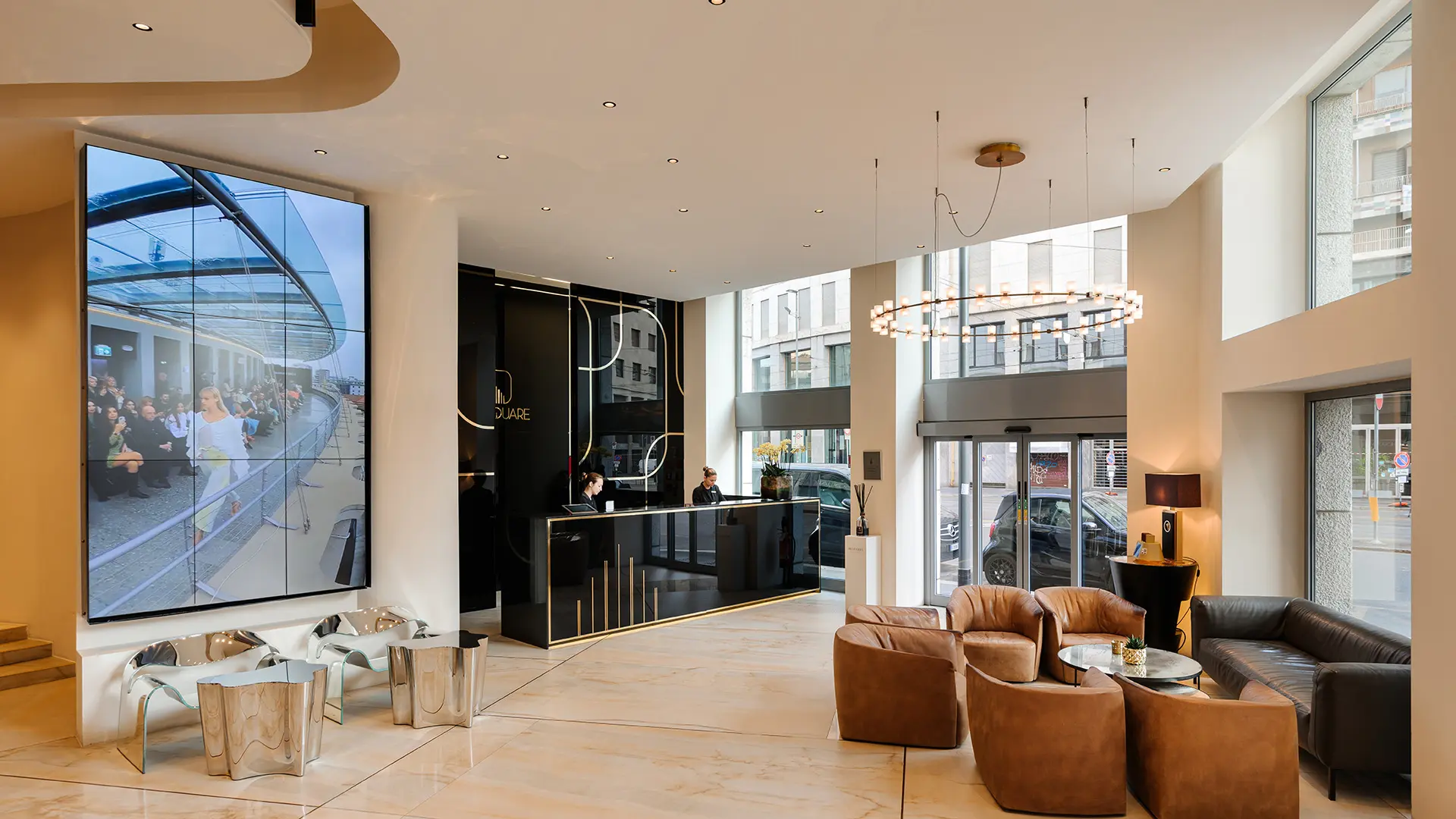In partnership with MiCodmc, a selection of establishments ripe for discovery during the 64th edition of the Salone del Mobile.Milano, from 21 to 26 April 2026
Storytelling and Made in Italy: how video is evolving

Screenshot from Mountain View by Dima Loginoff, “The craftmanship behind the light”, Axolight
Three Italian companies in the lighting sector explain how moving images offer new business opportunities, while shaping new emotional geographies
An essential step from the digitization of media, as well as a new business opportunity. Italian companies in the lighting sector are convinced of this: video is a powerful and versatile tool of communication, capable of reaching an ever broader audience around the world.
“For our firm, the real turning point was Covid-19, because an essential component of the shopping experience we offer our clients is a chance to come to Murano and visit our furnaces and the Barovier&Toso monobrand building on the island, with a floorspace of 1000 square meters,” says the architect Daniela Sarracco, the company’s marketing & communication manager. “When we could no longer do this, because of the pandemic, we asked ourselves how we could make that kind of experience come alive for our clients around the world.”
The two video projects, which the company has been working on during 2021, were published earlier this year. Through sounds, images, colors and feelings, they recount what it is like to work and create for the world’s oldest company: Barovier&Toso boasts seven centuries of history. The result is two parallel narrative strands, the Tales and the Journey, whose common feature is the poetic and emotional tone of voice. “These are stories that reveal the magic of production, moments to immerse yourself in,” explains Sarracco. “A tribute not only to the masters of glassblowing but the whole production chain, the workers and the ability to create a completely bespoke product from design to delivery.”
The Tales – 40 videos lasting some 40/45 seconds each – were created for digital media (Facebook, Instagram, WeChat, Weibo). These are short emotional stories aimed at capturing the essence of the brand, depicting the context. “Our goal was to convey the background where glass products are created, promoting the setting, the people, the island itself where we still produce today. This is why we chose not to use actors, but to work with the faces and voices of the company’s staff. The presence of dialect is the added value of provenance, the testimony to production that is local yet capable of taking a global approach to communication,” says Sarracco. A positive side effect of the recording of the Tales was the sense of belonging, pride and responsibility felt by all the workers involved. “At the start it was far from easy. Some were reluctant to appear in the video, but the more the project took shape, the more they expressed their passion for their work. It was a great team moment.”
The Journeys were the Murano-based company's response to the trend towards virtual tours when showrooms closed due to the pandemic. These are three longer videos, lasting about three minutes, developed with IF Experience, an Italian firm that organizes experiential and cultural luxury tours, often to places not open to the public. “Filippo Cosmelli, one of the two founders, immediately understood the mood they wanted to express and lent himself as narrator, a bit like Alberto Angela, leading the viewers on three different journeys: production, from the arrival of the raw material to the packaging and shipping of the product; the monobrand palace in Murano; the Milan showroom,” explains Sarracco.
Since the company exports to 80 countries, the videos produced, while retaining the original dialogue to guarantee the authentic air breathed in Murano, are subtitled in Italian, English, Russian, Chinese, the four languages used to present the site. “Barovier&Toso’s products are timeless, so communication cannot be reduced simply to talking about the product itself. Precisely because they’re timeless, while relating the beauty of which we tell today, it’s important for our narrative to focus on the immortality of the brand and to vary creatively so as not to be repetitive,” concludes Daniela Sarracco, explaining why the company does a lot of outsourcing for the creative resources it relies on in video production.
Again for Davide Groppi the transition to a more intensive use of the video medium reflects both the changing times and a way of showcasing the product created.
“Video builds a more immersive and engaging experience for the client,” explains the designer from Piacenza. “For companies like us that produce lighting, video, as an event that exists by virtue of backlighting or projection, is an even more versatile opportunity, because it enables us to make the object of our work real.” In this way the preference for moving images over static ones adds value and magic to the narrative of the product made in Italy. Storytelling and video-making speak a shared language. “I’ve always found the story behind every lamp or project a crucial factor in our work. The story of the creative process is invariably fascinating. I see it as a way to express what I feel, without filters,” comments Groppi. “One thing that always strikes our clients and partners is our history, the anecdotes, the sense of what we do, our emotional geographies.”
A feature of design in Davide Groppi's studio is its creative freedom, its independent mindset. “Davide Groppi has always stood out for its autarkic side. Creativity, thought, intuitions almost always start from within,” comments the designer. “In the case of video productions, we use an external studio that works with us in the filming, giving the right contribution for a production design that makes an impact. The important thing is being oriented to the final result directed to the search for the true and the new.” Whatever the reference platform – the homepage on the website or the YouTube channel of the same name – the common thread of corporate communication has to achieve an effective, real, emotional content conveyed through different methods and adapted according to suit the distribution channels. “We always try to look our customers in the face, choosing the most suitable tools among those available. Starting from photography, understood as light and the writing of light, and passing through production design, we work to achieve a true and exciting result,” concludes Groppi.


 Markets
Markets








